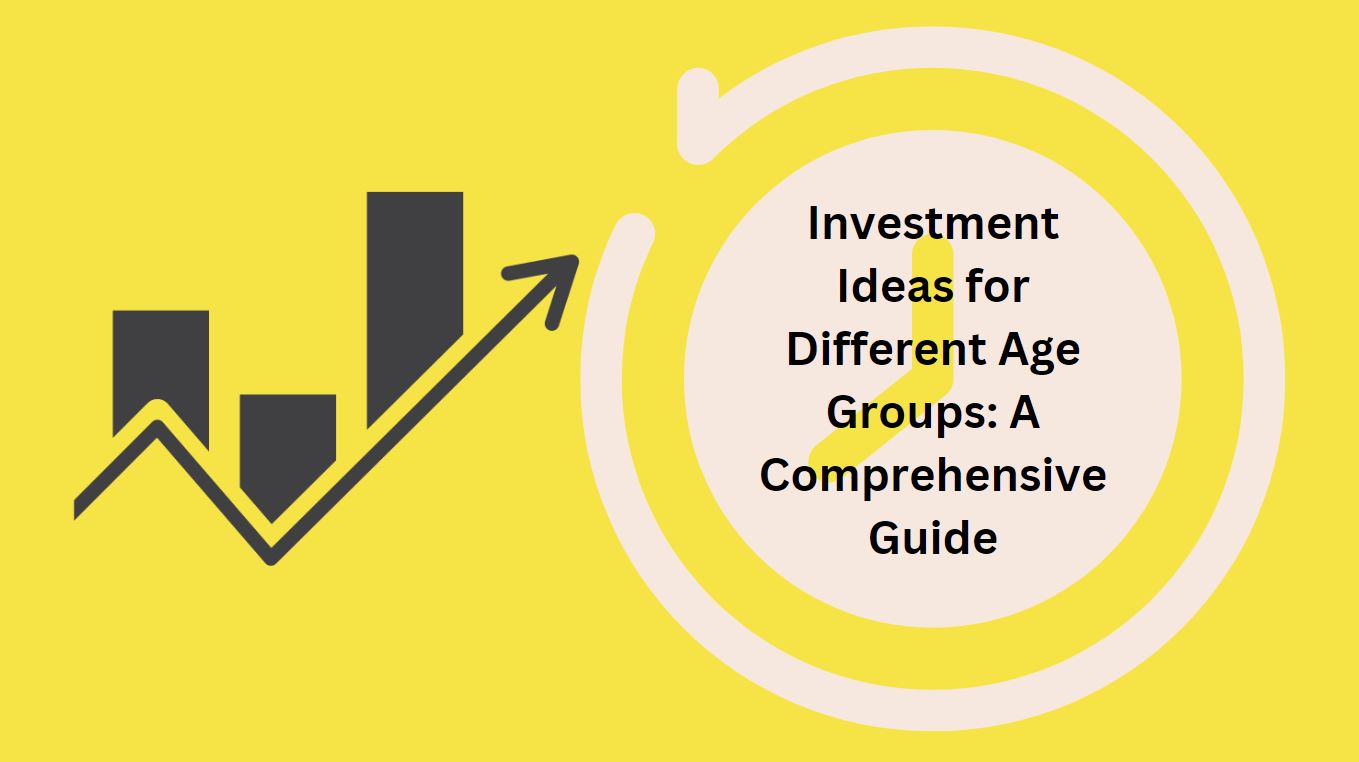Investment Ideas for Different Age Groups: A Comprehensive Guide

Investment is a dynamic process that changes according to life stages, age, and financial objectives. Investment ideas should be followed so that there could be a long-term view of financial proficiency and regarding enhancing the returns are to propose some routinization in investment plans for different age groups. The plans people are making regarding invest should be unique to them, with consideration of their financial status, age, and even their ability to risk. The following are investment ideas that may not seem to complement different people’s view, but they can, in fact, make a difference in financial planning. The following is a brief introduction on the type of investment suggestions based on age but before making changes in your investment profile or portfolio it is advisable that you consult a financial expert.
1. Teens and Young Adults (18-25)
For the future education expenses, these people may contribute to the 529 plans (In the United States of America, there is the 529 plan that aims at helping people to save for their tuition fees in a particular college. These plans are a desirable choice for saving for college expenses because they provide tax benefits, such as tax-free investment growth and withdrawals for eligible educational expenses.) or educational funds as per your geographies. Additionally, they can investigate stock markets, start learning about indexes and stock prices, and think about making investments in low-risk, high-reward stocks.
2. Young Professionals (26-35)
It is argued that embracing pension policies should be the better goal of young working populace. They should set up some money for emergency. Another good idea for long-term gain is to invest in exchange traded funds (ETFs) or growth stocks. These terms simply refer to the same type of securities. Moreover, the strategies that will have long-term monetary benefits will also entail saving and contributing to accounts such as 401(k) and IRA. People should also start investing in long-term deposits.
- 401(k)s – Employer-sponsored retirement plans, or 401(k)s, allow workers to contribute a fraction of their pretax earnings in a bid to create retirement savings.
- IRAs (Individual Retirement Accounts)- People are rightly confused between IRAs and SEP-IRA since IRAs are proficient retirement savings accounts that offer positive tax advantages to individuals.
3. Established Professionals (36-45)
It is recommended that different and experienced investors should get into developing a diverse portfolio with stocks, bond, and mutual funds. Also, it can start making investment in house/flat/apartments or any kind of commercial property/ office space/ building etc. In the long term, they may use their real estate investments to generate passive income.
4. Mid-Career (46-55)
It’s now time for the people in this group to increase and optimize their retirement contributions; they ought to fund their retirement accounts with additional funds and think about making catch-up contributions. In order to save money on future medical costs, they should also invest in Health Savings Accounts (HSA).
5. Pre-Retirement (56-65)
People in this group should now make cautious investments because they are old enough to make sensible choices. More capital will be safeguarded by this method. For this, they should consider annuities (A legal financial agreement between you and a life insurance provider where the provider makes regular payments to you for life after receiving one or more payments from you for the same) if they ever need guaranteed retirement income. They know what Social Security benefits are and ought to choose the best claim method.
6. Early Retirement (66-75)
For a reliable source of income, these people ought to invest in assets like dividend stocks. They ought to set up money for probable long-term care requirements.
7. Late Retirement (76 and above)
They ought to concentrate on protecting money and look into tax-saving options. They ought to think about investing in legacy funds for heirs and estate planning.
8. Empty Nesters
They ought to think about cutting back and use the extra money for possible expansion. They can set aside money for rewarding activities like trips.
9. Parents of Young Children
When allocating cash for their children’s future education, they ought to put education first. The family should be safeguarded by having sufficient life insurance.
10. Single Individuals
For future prospects, they ought to put more of an emphasis on personal growth and make investments in both professional and personal development. In addition, they ought to establish a sizeable emergency reserve for monetary stability.
Conclusion
Financial success depends on the ability to modify investment plans for varying age groups. At any point, achieving long-term financial goals and navigating the complexity of the financial landscape can be facilitated by a careful and diversified strategy to investing. Investment plans should be periodically reviewed and adjusted to be in line with changing financial goals and life circumstances.
Ultimately, people can maximize their financial progress, safeguard assets, and ensure a comfortable retirement by matching their investment ideas or plans with particular life stages. For long-term financial success, it is critical to periodically assess and modify investment plans in light of shifting objectives, market conditions, and individual circumstances.
Image credit- Canva
Discover more from Newskart
Subscribe to get the latest posts sent to your email.


Comments are closed.